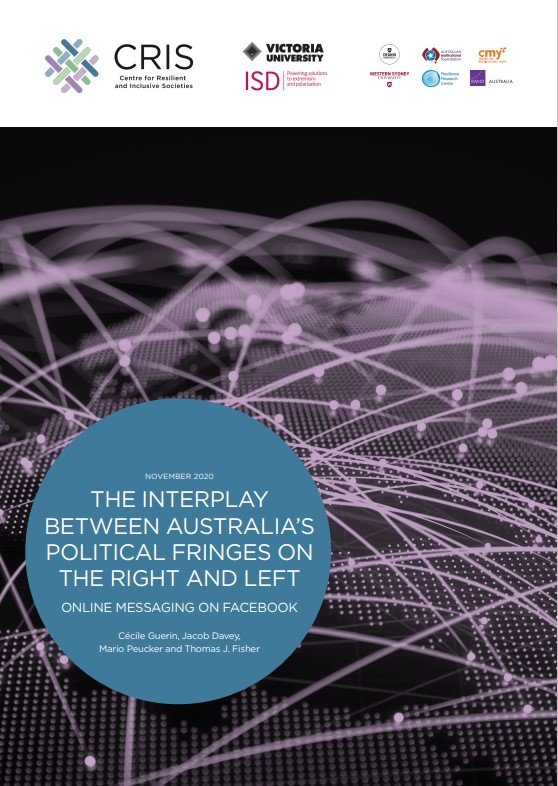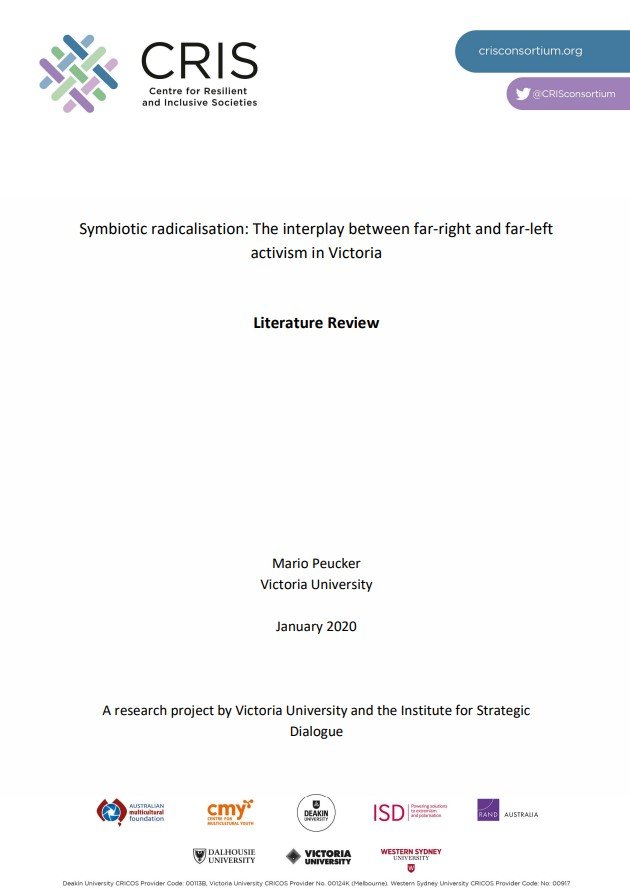Our Work
We generate strong empirical insights into the mobilisation tactics of politically radical and extremist groups in Victoria. We further assess the likelihood that they will use violence to pursue their political goals.
We explicitly reject any claims of equivalences between the ideologies or actions of the far-right and the radical left. Instead, we seek to understand how they interact online and offline, and in doing so, examine how central the opposition to the “other side” is to their self-definition.
We recognise that far-right and radical left ideologies and movements are radically opposed in values and goals, and cannot be considered as equivalents at opposite ends of the ideological spectrum.

Our Current Projects
Recruitment to a far-right group, community or political cause: How far-right actors seek to increase their appeal, sphere of influence and membership base
Research on recruitment to violent extremism has largely focused on jihadist terrorism, leaving gaps in our understanding of far-right recruitment. The CRIS project Contact zones (2021-2023) aimed to address these gaps, particularly in how we think about recruitment.
Building on this project, new research will closely examine the recruitment strategies of key far-right actors in Victoria, Australia. It will look at how these groups use both online and offline activities to promote their agenda and attract new members and supporters.
The research will explore how far-right actors use specific tactics to reach, attract, and select new recruits. It will also examine how they create an environment that encourages individuals to adopt far-right beliefs and join their groups or communities. This process combines top-down recruitment efforts with bottom-up approaches where individuals seek out these groups themselves.
Previous studies have shown that far-right groups often target people they see as vulnerable or susceptible. The new research will investigate if and how this happens in Victoria's far-right scene.
Another focus will be on how these groups use online platforms and real-world actions, and how they try to connect these two spheres to maximize their recruitment efforts. This includes examining how far-right actors interact with mainstream media to spread their ideas and recruit new members, such as through deliberate "media baiting" tactics.
The research will also draw on findings from a completed CRIS study about how mainstream media influences the growth of radical political movements. By examining these various aspects, the project aims to provide a comprehensive understanding of far-right recruitment strategies in Victoria.
Misogyny and Violent Extremism
Recent research shows that anti-women attitudes are common in extremist groups across political and religious lines, both in Western and non-Western countries. These groups often promote a specific view of masculinity that plays a key role in their beliefs. Common themes in these extremist ideologies include strong opposition to feminism and LGBTQ+ rights, a belief that society now favors women over men, and a desire to limit women's roles to homemaking and motherhood.
Various extremist groups, from religious extremists to far-right organizations, use these ideas to recruit young men who feel left behind or angry. Online communities, known as the "manosphere," serve as gathering places for men with these views.
This anti-women sentiment can lead to serious real-world harm. Online harassment of women and girls has increased, especially during and after the COVID-19 pandemic. The United Nations and the Australian Human Rights Commission have identified this as a significant global problem. The impact of these ideologies extends beyond online spaces. There have been incidents of violence targeting women in public spaces. For example, the recent attack in Bondi in April 2024 is being investigated as a possible case of gender-based targeting, with women making up the majority of victims. There's also an ongoing issue of violence against women in homes, both in Australia and globally. Several terror attacks and foiled plots in North America and Europe have specifically targeted women. Additionally, there's been an increase in violent rhetoric and actions against the LGBTQ+ community, particularly surrounding events like drag queen story times.
Despite ongoing research, there are still gaps in our understanding of this rapidly evolving problem. More work is needed to develop effective ways to prevent men from being drawn into these extremist movements and to protect women and other targeted groups from the resulting violence. This includes tailoring interventions specifically for men attracted to extremist movements through violent misogyny.
This project aims to investigate the links between extremism and family violence, anti-women or anti-feminist sentiment and identify opportunities for counter-extremism measures.
Our Completed Projects
crisis points: understanding extremism in a state of emergency
Publications

























This a two-part series, Senior Fellow Dr Mario Peucker discusses the nature of radical-right recruitment.